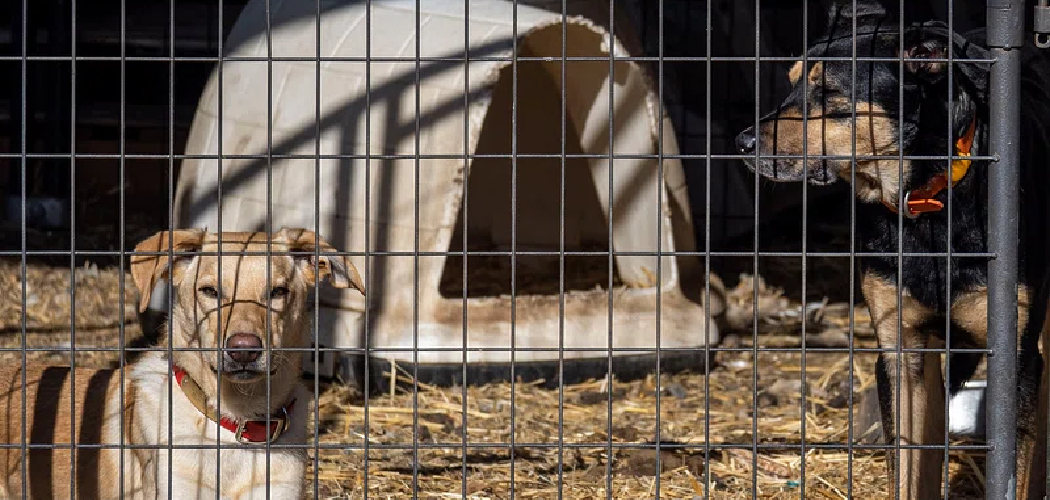Are you looking for ways to secure a dog crate door? Whether you are using a crate for training or travel, it’s important to ensure that your furry friend is safe and secure inside their temporary home.
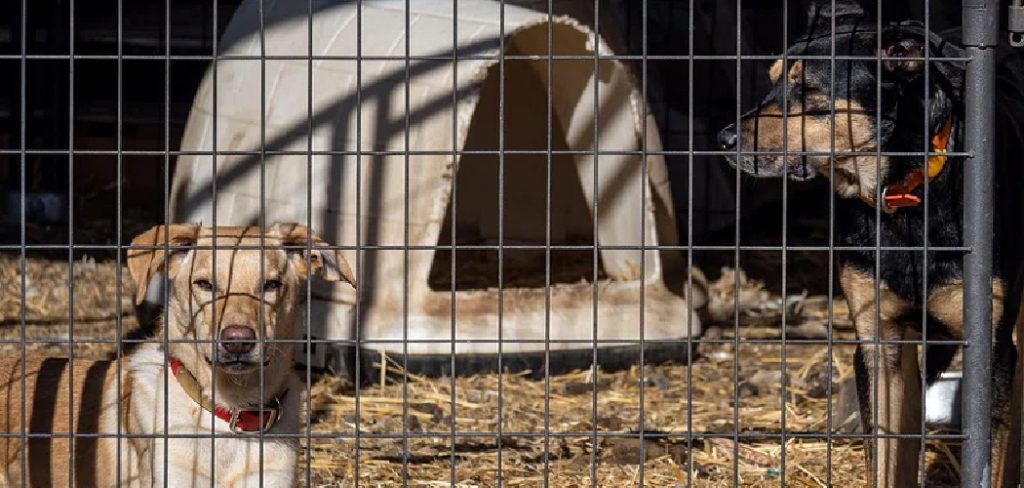
Ensuring the security of a dog crate door is essential for the safety and well-being of your pet. A properly secured crate door can prevent your dog from escaping, which is particularly important when you’re not around to supervise. Additionally, it can also help in maintaining a structured environment for your dog, which is beneficial for their training and overall behavior.
This guide will provide you with step-by-step instructions on how to secure a dog crate door, covering various types of crates and locks, to ensure your furry friend remains safe and sound within their designated space.
What are the Benefits of Securing a Dog Crate Door?
Before we dive into the methods of securing a dog crate door, let’s first understand why it’s important to do so.
- Prevents Escape: Dogs are naturally curious and energetic animals, and they may try to escape their crate if given the opportunity. A securely locked door will prevent them from escaping and potentially getting lost or injured.
- Ensures Safety: A secured door also ensures the safety of your dog by keeping them confined in a designated area, away from potential hazards or dangers. This is especially important if you have other pets or young children at home.
- Maintains Structure: Dogs are creatures of habit and thrive in structured environments. By securing their crate door, you are creating a consistent routine for your dog, which can help in their training and overall behavior.
These are just a few of the many benefits of securing a dog crate door. Now, let’s move on to the methods you can use to ensure your dog’s crate is properly and securely locked.
What Will You Need?
The type of crate and lock you have will determine the tools or materials needed to secure the door. However, here are some common items you may need:
- A dog crate (wire, plastic, or soft-sided)
- A lock (padlock, carabiner, zip tie)
- A crate cover (optional)
- A leash (optional)
Once you have these items ready, you can proceed with securing the dog crate door.
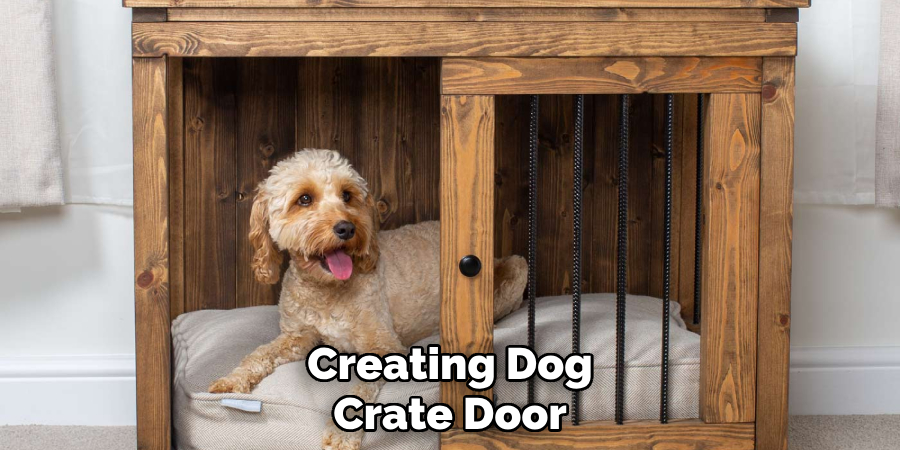
10 Easy Steps on How to Secure a Dog Crate Door
Step 1. Choose the Right Lock:
The first step in securing a dog crate door is selecting an appropriate lock. If you’re using a wire crate, a padlock or a carabiner clip might be ideal due to their durability and strength. A zip tie could also be effective for plastic crates, especially for temporary use during travel.
Make sure the lock you choose is sturdy and cannot be easily tampered with by your dog.
Step 2. Test the Lock Before Use:
Before you install the lock on the crate, it’s important to test it to ensure it works properly and is secure enough for your dog. Try locking and unlocking it a few times to check its functionality.
This step is crucial to avoid malfunctions that could leave your dog locked inside the crate longer than intended or allow them to escape due to a faulty lock. Safety should always be the top priority when securing your dog’s crate.
Step 3. Attach the Lock to the Crate Door:
After selecting and testing your lock, the next step is securely attaching it to the crate door. If you’re using a padlock or carabiner clip for a wire crate, find a secure part of the door to attach it. This is typically where the door latch is located. Ensure the lock goes through both the door latch and the crate wire to prevent the door from being pushed open from the inside.
For plastic crates, using a zip tie, thread the tie through the door’s locking mechanism and any adjacent openings in the crate to ensure the door remains closed. Tighten the zip tie until there’s no slack, but be careful not to over-tighten, as this could damage the crate or the door mechanism.
Step 4. Check for Any Gaps or Weak Points:
Once the lock is securely in place, inspect the crate for any gaps or weak points around the door area. Even with a lock installed, some dogs may still attempt to push through weak spots or chew through openings if they’re determined to escape.
Pay special attention to the bottom and sides of the door, ensuring there are no spaces large enough for your dog to get their mouth or paws through. Reinforce any weak areas with additional security measures if necessary, such as extra locks or adjusting the positioning of the crate against a wall to block access to these potential escape routes.
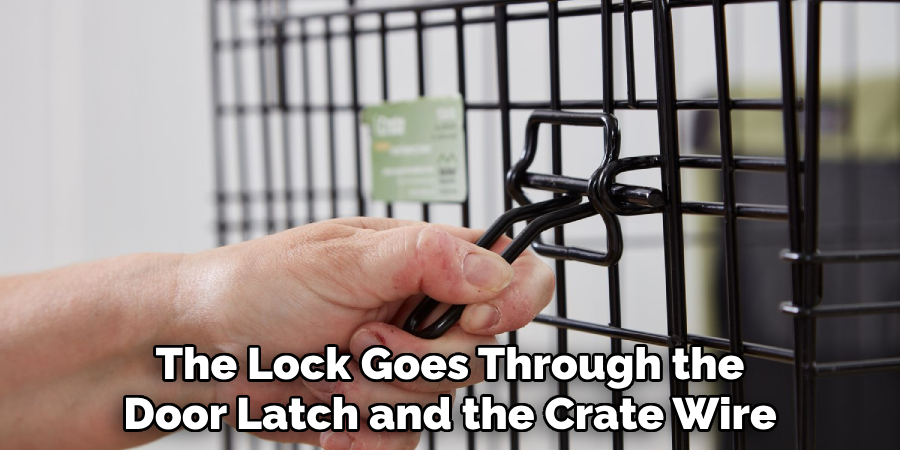
Step 5. Cover the Crate (Optional):
Covering the crate with a lightweight blanket or a designated crate cover can help create a more secure and calming environment for some dogs, especially those prone to anxiety or who are particularly determined to escape. This can deter escape attempts by limiting their view of the outside, thereby reducing stimulation and the desire to get out.
When covering the crate, ensure there is enough ventilation so your dog can breathe easily and remain comfortable. Place the cover over the top and sides of the crate, leaving the door uncovered to monitor your dog as needed and to ensure they have enough airflow.
Step 6. Monitor Your Dog’s Behavior:
After securing the crate door with the chosen lock and potentially covering the crate, it’s important to monitor your dog’s behavior closely for the first few days. Look for any signs of distress or unusual behavior that could indicate discomfort with the new setup.
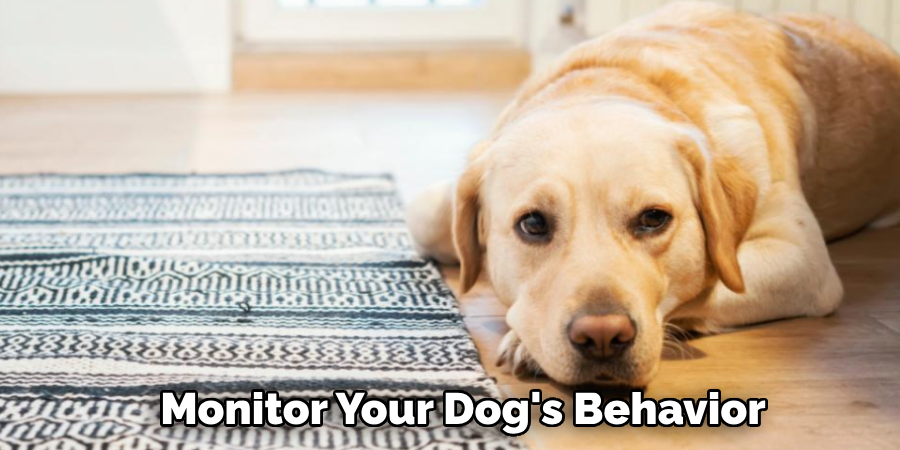
Some dogs may attempt to chew through the crate or lockout of anxiety or frustration, so observing how they react when locked inside is crucial. If you notice any persistent or distressing behavior, consider consulting a veterinarian or a professional dog trainer for advice on how to make your dog more comfortable with their crate.
Ensuring your dog’s well-being is paramount, and environmental adjustments may be necessary to foster a positive association with the crate.
Step 7. Provide Comfort Inside the Crate:
Ensuring that your dog feels comfortable and at ease inside their crate is essential for a positive crate experience. Place a soft bed or blanket at the bottom of the crate to provide a cozy surface for your dog to lie on. Including favorite toys and a water, bowl can also help make the crate feel more inviting and less like confinement.
Consider adding a chew or treat-dispensing toy for longer periods to keep your dog entertained and mentally stimulated. The goal is to create a safe haven for your dog, where they feel secure and happy, rather than viewing the crate as a form of punishment.
Step 8. Use Positive Reinforcement:
Encouraging your dog to view the crate as a safe and pleasant space is crucial for their acceptance of it. Implement positive reinforcement by rewarding your dog with treats, praise, or playtime each time they enter the crate willingly. Start by placing treats inside the crate to lure them in, then gradually increase the time they spend locked inside before receiving a reward.
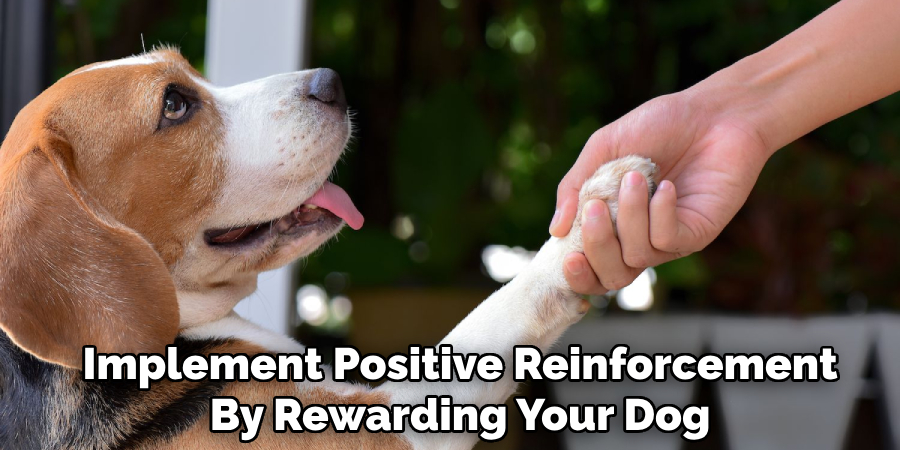
If your dog shows signs of anxiety or reluctance, slow down the process and continue to encourage them gently without forcing them into the crate. Over time, this positive association will help your dog feel more comfortable and may even lead them to seek out the crate as a place of refuge.
Step 9. Establish a Routine:
Consistency is key when it comes to crate training and ensuring your dog feels secure within their confines. Establish a routine by setting specific times for your dog to spend in the crate, such as during the night or when you are out of the house.
Gradually increase the duration as they become more accustomed to being in the crate, but always ensure they have time outside for bathroom breaks, exercise, and social interaction. By maintaining a regular schedule, your dog will learn what to expect and find comfort in the predictability of their routine, further reinforcing the crate as a positive and safe space.
Step 10. Gradually Increase Time Spent in the Crate:
Once your dog shows signs of comfort and willingness to enter the crate, begin to gradually increase the amount of time they spend locked inside. Doing this in small increments is important to avoid causing stress or anxiety. Start with a few minutes at a time and slowly build up to longer periods as your dog becomes more relaxed and accustomed to being in the crate.

Always be mindful of your dog’s limits and provide plenty of breaks for them to stretch, play, and relieve themselves. This gradual increase in crate time helps ensure that your dog perceives the crate as a comfortable and safe environment, reducing the chances of anxiety or discomfort associated with longer periods of confinement.
By following these steps and properly introducing your dog to its crate, you can help create a secure and comfortable space for it.
5 Additional Tips and Tricks
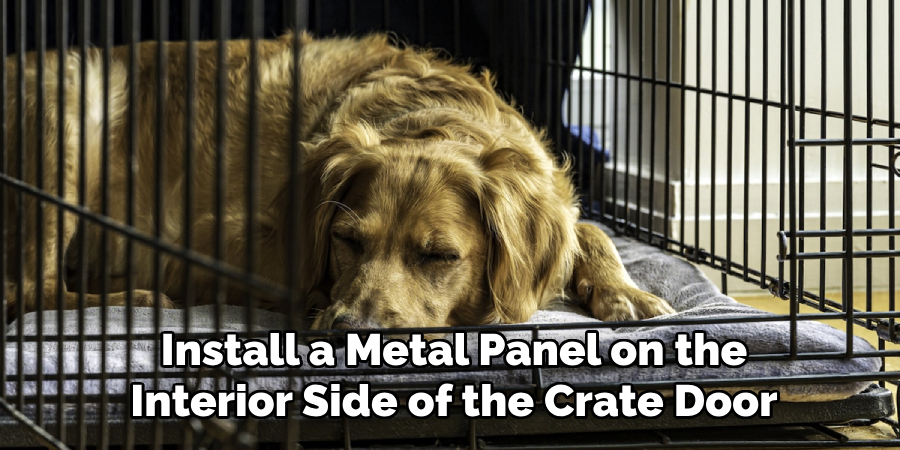
- Use Carabiners: Handy and strong, carabiners can be an excellent way to add an extra layer of security to a crate door. Simply attach one or more carabiners through the door’s locking mechanism to prevent your dog from pushing or pulling the door open.
- Door Guard Panels: Install a metal or plastic panel on the interior side of the crate door. This can deter dogs who like to chew or paw at the door, adding durability and preventing escape.
- Double-up the Latches: Adding an extra latch can significantly increase its security if the crate’s design allows. Some crates may have space for an additional latch to be installed, or you can use a sturdy lock designed for pet crates.
- Slip-proof Mats: Placing slip-proof mats under the crate can help prevent your dog from moving or tipping the crate over in an attempt to escape, providing extra stability, especially on slippery floors.
- Training: The most effective strategy is to train your dog to feel comfortable and relaxed in their crate. Positive reinforcement techniques, such as treats and praise when they enter the crate willingly, can help reduce the desire to escape and ensure they view their crate as a safe space.
With these additional tips and tricks, you can ensure that your dog’s crate door is secure and your pet is safe at all times.
5 Things You Should Avoid
- Avoid Using Sharp Objects for Securing Doors: Implementing sharp objects like nails or screws to secure the crate door can pose serious injury risks to your dog. Always opt for pet-safe alternatives that won’t harm your furry friend.
- Do Not Rely Solely on Zip Ties: While zip ties can offer a quick fix, they’re not the most durable or secure method for long-term use. Dogs can chew through or break zip ties, possibly leading to escape or ingestion of the plastic.
- Refrain from Heavy Locks: Attaching heavy locks to the crate door might seem like a secure option, but it can be dangerous. The weight of a heavy lock can strain the door hinges, leading to potential failure. If the lock is within reach, your dog might try to chew or play with it, risking injury.
- Avoid Blocking Ventilation: In the pursuit of security, ensure not to obstruct the crate’s ventilation by covering it with solid panels or cloths. Proper airflow is crucial to ensure your dog’s comfort and health inside the crate.
- Do Not Leave Collars on in the Crate: To prevent your dog’s collar from getting caught or hooked on the crate’s door or interior, it’s safest to remove it when your dog is crated. This reduces the risk of accidental choking and adds to their overall safety and comfort.
By avoiding these common mistakes, you can effectively secure your dog’s crate door while ensuring its safety, comfort, and well-being.
Are Dogs OK in a Crate All Day?
While crates can be a useful tool for managing and training dogs, it’s essential to ensure that they are not left in the crate for extended periods. Dogs are social animals and require regular exercise, mental stimulation, and interaction with their owners. Leaving them in a crate all day can lead to boredom, anxiety, and behavioral issues.
Experts recommend that adult dogs should not be crated for more than six to eight hours a day, and puppies should not be crated for more than three to four hours. Providing ample opportunities for your dog to stretch their legs, play, and relieve themselves throughout the day is crucial.
If you need to leave your dog alone for an extended period, consider hiring a pet sitter or taking them to a dog daycare facility. If crating is necessary, ensure that it is appropriately sized and equipped with comfortable bedding, toys, and water to keep your dog happy and healthy during their time in the crate. It’s also essential to gradually introduce your dog to being crated and avoid using it as a punishment or confinement tool.
Remember, there are more suitable substitutes for proper exercise, socialization, and attention than leaving your dog in a crate all day. Dogs are happiest when they can be with their owners and have opportunities to explore and play. By using crates responsibly and providing your dog with the care it needs, you can ensure its physical and mental well-being while keeping it safe and secure when crated.
Why is Crate Training So Hard?
Crate training can be challenging for both dogs and their owners. It requires patience, consistency, and understanding to teach a dog to view their crate as a safe and comfortable space rather than a form of punishment or confinement. Here are some common reasons why crate training may be difficult:
- Negative association: If a dog has had previous negative experiences with being confined or is punished by being put in a crate, changing their negative perception of crates can be challenging.
- Lack of proper training: Crate training requires time and effort from the owner. With consistent and positive reinforcement, a dog may understand what is expected of them when being created.
- Separation anxiety: Dogs with separation anxiety may struggle with being confined in a crate, as it can intensify their anxiety. It’s important to address and manage separation anxiety before attempting crate training.
- Medical conditions: Some medical conditions, such as bladder issues or joint pain, may make it difficult for a dog to hold their bladder or comfortably get in and out of the crate, making crate training challenging.
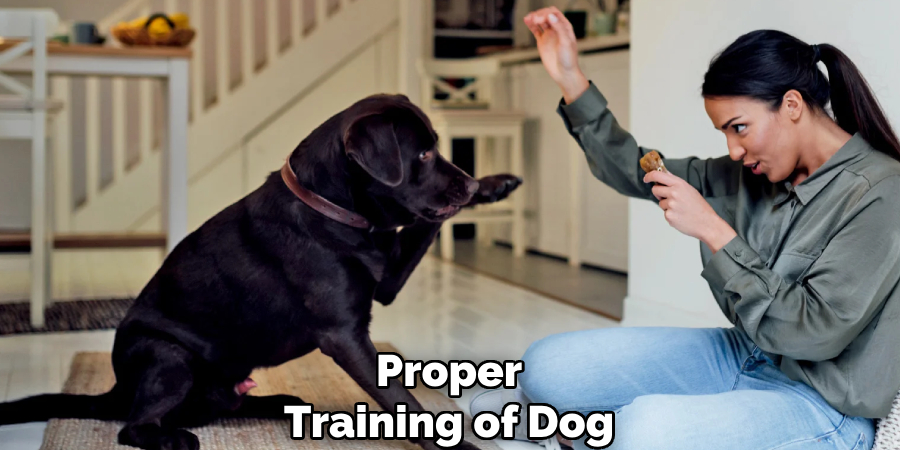
Despite these challenges, proper crate training can benefit both dogs and their owners. It provides a safe and comfortable space for dogs to rest, helps with potty training, and aids in managing destructive behavior.
Conclusion
How to secure a dog crate door is essential for their safety and your peace of mind. By incorporating the tips and avoiding the common pitfalls mentioned above, you can create a secure and safe environment for your pet.
Remember that the goal is not just to prevent escape but to ensure that your dog feels comfortable and relaxed in its crate, considering it its private haven. Ensuring the crate door is securely fastened with safe, dog-friendly methods can help prevent accidents and injuries. Additionally, it is crucial to understand that long periods in a crate are not beneficial for your dog’s mental and physical health.
Ultimately, a combination of a secure crate, proper training, and ample time outside the crate will contribute to a happy, well-adjusted, and safe pet. Engage in these practices, and you’ll do your utmost to provide a nurturing environment for your furry companion.

